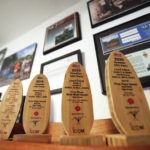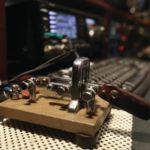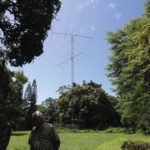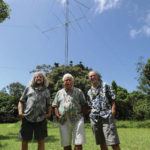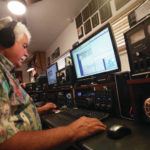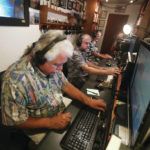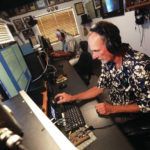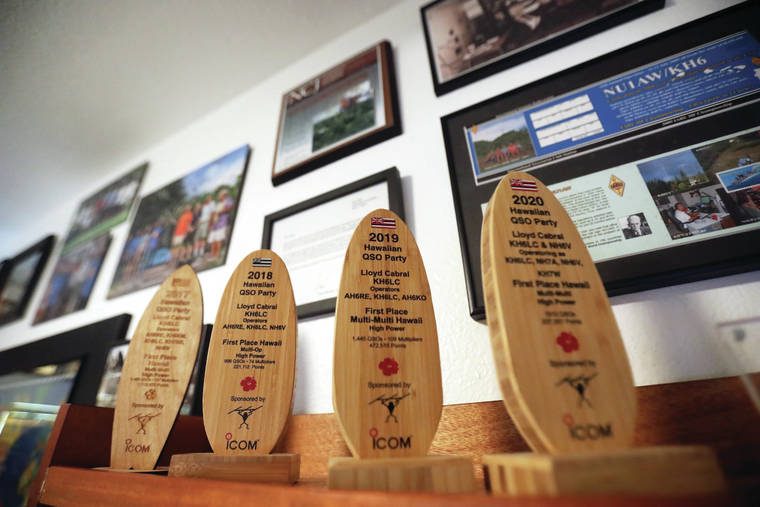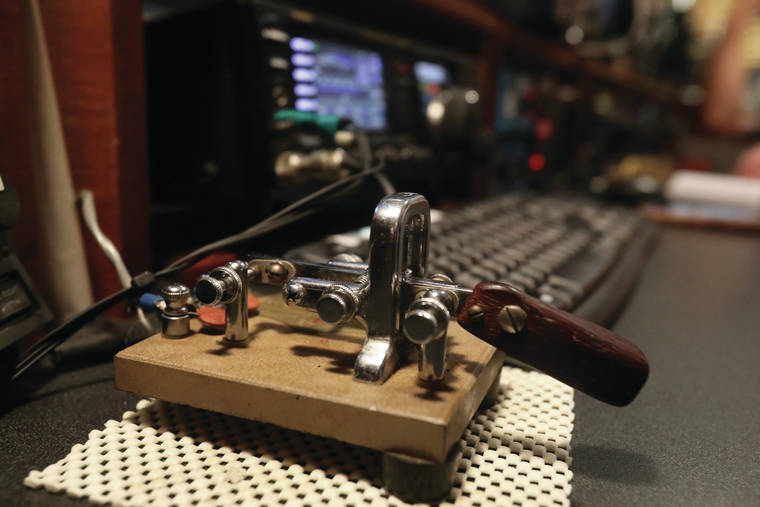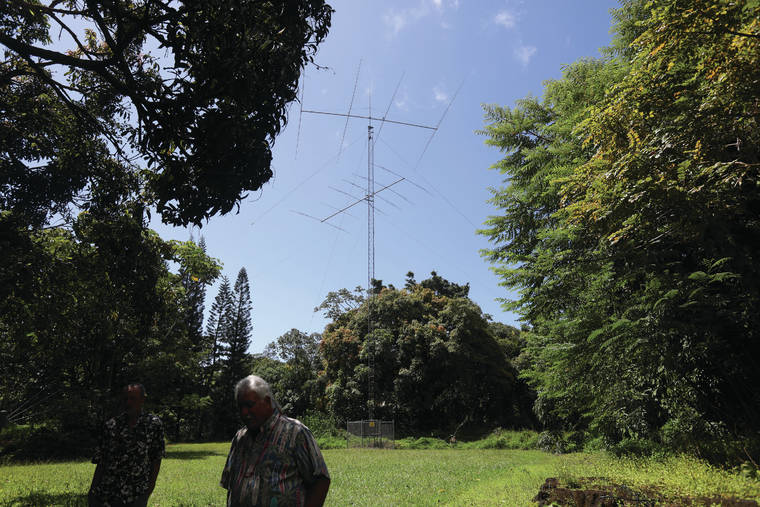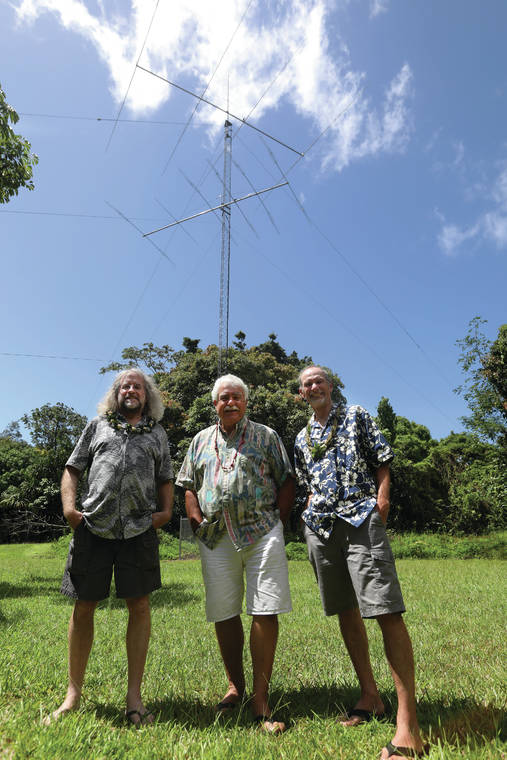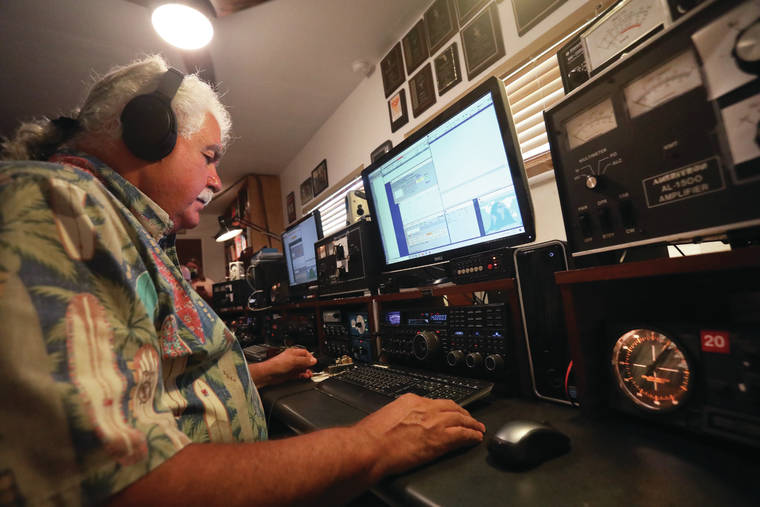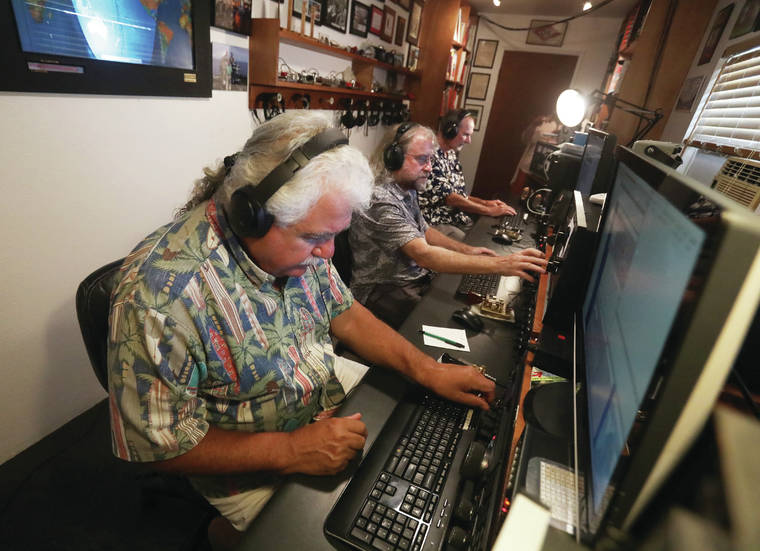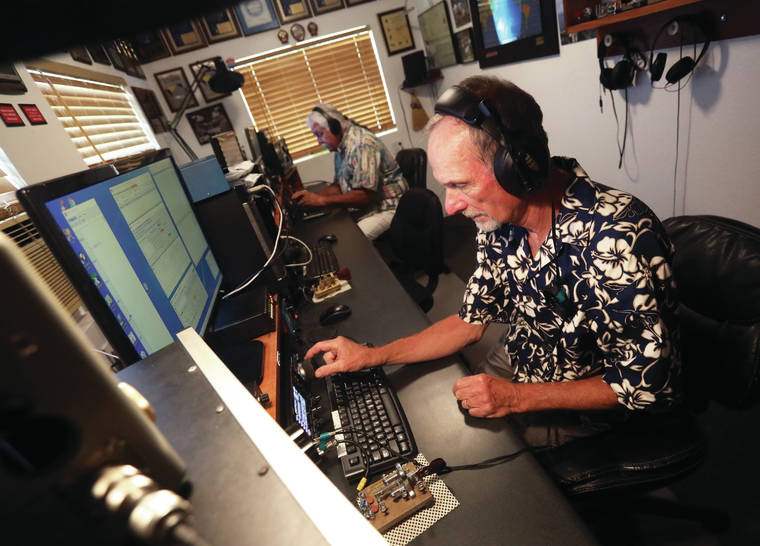Ham radio operator Lloyd Cabral sits in the station he built inside his Hawaiian Paradise Park home, headphones on and finger moving on a CW, or continuous wave paddle, tapping out a message in Morse code.
On other end is an operator more than 2,400 miles away on a beach in Coos Bay, Ore.
Cabral, whose call sign is KH6LC, has been a ham radio operator for more than five decades.
Ham radio, or amateur radio, is non-commercial, two-way radio communications.
“This hobby is one of those hobbies that there’s 50 million (avenues) you can pursue,” Cabral said. “From the technology side — the antennas, the study in propagation and building equipment and building antennas — then there’s people that just like to talk.”
But Cabral and a core group of six operators, along with other guest operators — including Robert Van Geen of Waikoloa, call sign NH6V, and Stan Froseth, call sign AH6K0 — are into the competition side of ham radio, or “radio sport.”
“I built the station, and we’ve been pretty active and pretty successful since 2005,” Cabral said. “We represent Hawaii in national and worldwide competitions and have done pretty well.”
Contests are typically 36 to 48 hours, during which operators try to “work,” or make contact with, as many different people at as many different stations in as many different states and countries as they can.
Depending on the number of transmitters that are running, Cabral said the operators working a contest can contact between 6,000 and 8,000 people in 48 hours.
Contests, in which there are no financial prizes, can be done in a variety of modes.
“We specialize and are known for the … Morse code. That is what we do,” said Cabral.
“We’re trying to keep the tradition (going),” Van Geen said.
For many, the skill is like playing music, Cabral said.
“So you’ve got to keep your chops up. … You can’t be off the air or away from it for a whole long period of time, then walk in here and expect to do well.”
Cabral has been into ham radio for 55 years and first received his license at 15, while Van Geen has been an operator for 45 years, having also been licensed around 15.
Froseth, who was first licensed in 1968, has only been active for about 14 years.
“This was pre-internet, pre-cellphone,” Cabral said of his interest in amateur radio. “So the idea of having a radio at your house, a little radio and some wires outside — up on the roof or out in a tree — that you can talk to people potentially all over the United States or in foreign countries — I remember the first time I (contacted) somebody in Japan. I was a teenager. I mean, it was a big deal. I remember where I was and what I was doing.”
Froseth got into ham radio in a similar way.
“When I was a kid, I found an old radio that had shortwave bands on it. I was listening, and things I heard were hams, and I thought, ‘What’s that?’ and before you knew it, I was doing it, too.”
But the group does more than contests.
Cabral’s station joined other amateur radio operators in Hawaii for a special Kamehameha Day celebration on Friday.
A special event call sign, K6K, was on the air from 6 a.m.-10 p.m.
“But it’s not a contest,” Cabral said. “It’s an operating event, so on our side, there’s no pressure, there’s no stress.”
According to information on the event website, the idea is to allow as many operators as possible to reach the station operators and to learn about King Kamehameha I.
Cabral said the organizers weren’t going to do any kind of Morse code, so he reached out.
“Well that’s what we do. That’s our thing, That’s kind of what we excel at. We’re kind of known for it.”
It feels good to be a part of the Kamehameha Day celebration, he said.
“Our thing is that we get to represent Hawaii all over the world, and that is really cool,” Cabral said. “We expect to make quite a few contacts. … That’s what this contesting is about, too. It’s really making sure that Hawaii is represented in these national and international events.”
According to Cabral, there are more than 600 licensed amateurs on Big Island but a very small number are active.
“Part of the fun of working in a station like this, whether it’s a real contest … or the K6K special event, is having a group of us,” Froseth said. “There will be like two or three of us in (the station) working, and there’ s a lot banter back and forth and suggestions and laughing and hollering. … Sometimes people will drop by just to see us, hams and nonhams. So it’s a real neat community.”
For more information about Cabral’s station, visit kh6lc.com.
Email Stephanie Salmons at ssalmons@hawaiitribune-herald.com.
